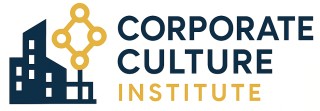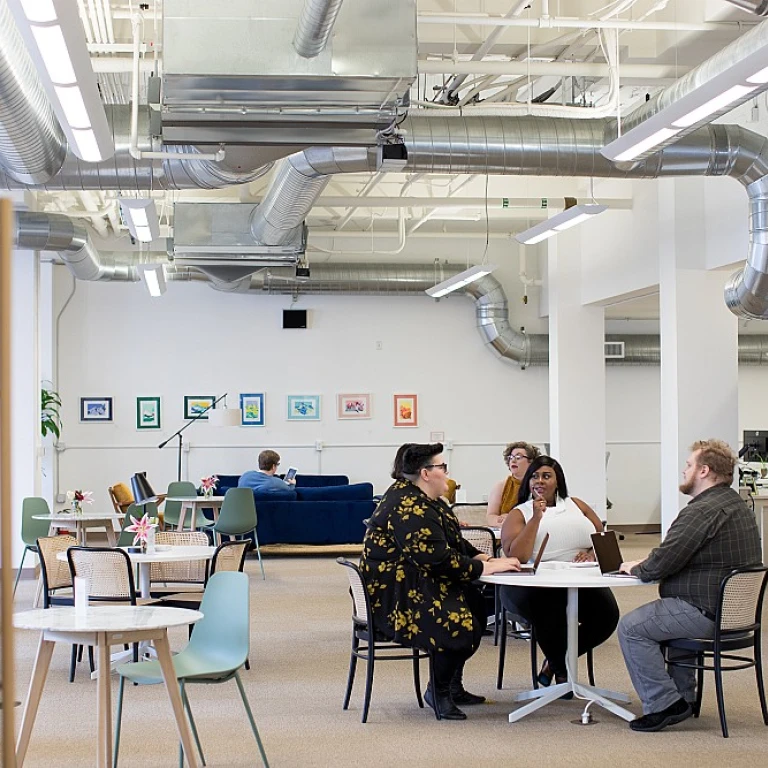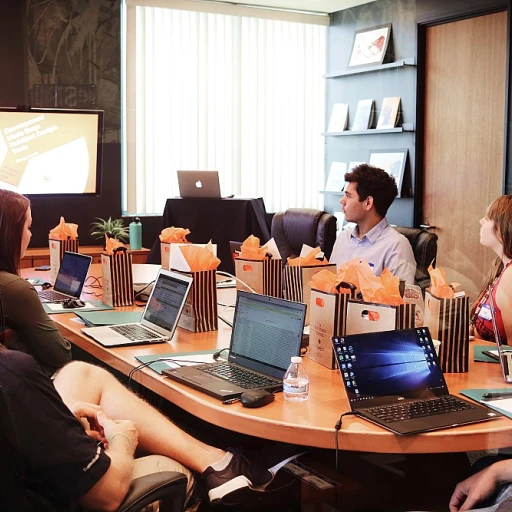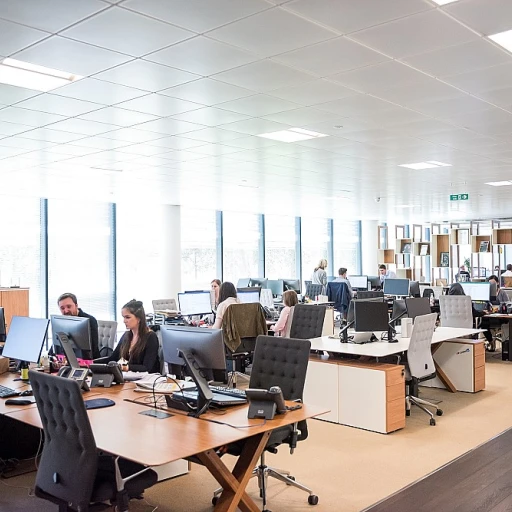
Understanding the Importance of Career Development
Recognizing the Value of Career Development
In today's fast-paced business environment, understanding the importance of career development is crucial for both organizations and employees. Career development programs are not just a perk but a necessity for fostering employee engagement and retention. When employees see a clear path for career progression, they are more likely to remain committed to their roles and contribute positively to the company.
Career development is about more than just promotions or salary increases. It's about providing employees with opportunities for professional growth and helping them acquire new skills that align with both their personal career goals and the company's objectives. This alignment is essential for creating a motivated workforce that is equipped to meet the challenges of the future.
Benefits for Employees and Organizations
For employees, career development programs offer a structured approach to achieving their career goals. These programs can include training development, mentorship, and career pathing, all of which help employees identify their strengths and areas for improvement. By engaging in development conversations, employees can create a personalized development plan that outlines their career paths and the steps needed to achieve their aspirations.
For organizations, investing in employee development is a strategic move that can lead to long-term success. By nurturing talent and providing clear career progression frameworks, companies can reduce turnover rates and build a loyal, skilled workforce. This investment not only enhances employee satisfaction but also boosts the company's reputation as an employer of choice.
Creating a Culture of Continuous Learning
To effectively implement career development programs, companies must foster a culture of continuous learning. This involves encouraging employees to take ownership of their professional growth and providing them with the resources and support they need to succeed. Training programs, workshops, and access to online learning platforms can all play a role in helping employees develop new skills and advance in their careers.
Moreover, companies should regularly assess their organizational needs and goals to ensure that their development programs remain relevant and effective. By doing so, they can adapt to changing business landscapes and continue to support their employees' growth.
For more insights on enhancing performance reviews with peer feedback, you can explore this resource.
Assessing Organizational Needs and Goals
Aligning Organizational Vision with Employee Needs
Understanding organizational needs requires a holistic approach that takes into consideration the company’s vision, goals, and objectives. It's imperative to align the development programs with the organization's broader business strategies to ensure coherence and synergy. But equally vital is recognizing the aspirations and career goals of the employees. To start, evaluating the current business environment, the market dynamics, and potential talent gaps helps in framing a suitable plan that can accommodate both immediate and long-term objectives. By identifying these gaps and challenges, corporations can tailor employee development plans effectively.Incorporating Feedback and Setting Realistic Targets
Gaining insights from team members on their professional growth aspirations through regular development conversations can foster a supportive environment. Employees are more likely to participate in development programs if they see that their career pathing is considered. Setting realistic targets grounded in the organization’s goals and employee feedback ensures that the skills development aligns with the necessary business requirements. Creating a balance between the company’s expectations and employees’ individual career progression plans boosts engagement and motivation.Defining Key Metrics for Success
With the anticipated goals in place, defining clear metrics for success becomes necessary. This involves setting performance goals that align with both company-wide objectives and individual career development plans. Analyzing key performance indicators (KPIs) related to employee engagement, productivity levels, and skill advancements will help in measuring the effectiveness of the implemented development plans. By utilizing precise measurements, the organization can detect areas needing improvement and refine career programs for enhanced outcomes.Designing Personalized Learning Opportunities
A comprehensive understanding of the skills and resources required for various job roles facilitates the creation of personalized learning and training development opportunities. Elevating professional growth by offering opportunities tailored to specific career paths underpins a robust progression framework. To effectively help employees improve their competencies, the organization should consider various learning methods such as mentoring, on-the-job training, workshops, and e-learning platforms. Encouraging a culture of continuous learning propels both individual and organizational success. For additional insights on crafting effective development plans, consider exploring resources on development goals for managers.Designing a Comprehensive Career Development Framework
Crafting a Career Progression Framework
Designing a comprehensive career development framework is a critical step for any company looking to foster employee career growth. Such frameworks provide a structured approach to support employees' career progression, ensuring both personal and professional growth align with the organization's objectives. A well-structured career pathing plan not only helps employees to achieve their long-term goals but also strengthens the organization's talent pool by creating opportunities for continuous learning and development. Here are some key aspects to consider when designing your framework:- Aligning With Business Goals: It's essential to ensure that the career development plans align with the overall goals of the company. This alignment helps in creating development programs that support the organization's mission and vision.
- Identifying Skills and Competency Needs: Conduct thorough assessments to identify the skills that are critical for business success. This should include a mix of soft and hard skills that are necessary across various roles in the organization.
- Developing Clear Career Paths: Clearly define the potential career paths and progression routes available within the organization. This clarity helps employees visualize their future within the company, fostering motivation and engagement.
- Incorporating Development Conversations: Regular development conversations between team members and leadership are key to tailoring individual development plans. These conversations help employees identify their career goals and the skills needed to achieve them.
- Implementing Training and Development Activities: Leverage various employee development and training development opportunities that cater to diverse learning needs. This could range from formal training programs to on-the-job learning and mentorship.
Engaging Leadership and Securing Buy-In
Fostering Executive Sponsorship and Leadership Involvement
The success of career development programs in any corporation largely depends on engaging leadership and securing buy-in. For employees to perceive these programs as valuable, leadership must not only endorse but also actively participate in career development initiatives. By securing leadership engagement, you enhance employee perception, thus amplifying the impact of the programs.Here are key strategies to achieve this critical buy-in:
- Alignment with Company Vision: Illustrate how career development aligns with the company's broader business goals and vision. Leadership tends to support initiatives that contribute to overall organizational success.
- Showcase Tangible Benefits: Present clear evidence that demonstrates the impact of effective employee growth and development strategies on business performance. This could include statistics or case studies from your or other companies.
- Involve Leaders in Development Conversations: Facilitate spaces where leadership can share insights and personal experiences related to career progression. This can build trust and demonstrate a commitment to employee career growth.
- Offer Leadership Professional Growth Opportunities: Encourage leaders to also engage in their own learning and development plans. When leaders experience the benefits firsthand, they are more likely to become advocates of these programs.
Ultimately, fostering a culture of employee growth requires active leadership participation and endorsement. By ensuring executives and managers are fully invested, you’ll find it easier to implement and maintain a robust employee development framework. Connecting leadership enthusiasm with employee engagement can be the bedrock of sustainable career pathing and development programs.
Remember, the commitment from company leaders to support and promote career development indicates to employees that their professional growth is a priority for the organization. This kind of dedication builds a culture that encourages every team member to see career development as not only an available resource but a part of their daily work life.
Implementing and Communicating the Program
Rolling Out the Career Development Program
Once you have a solid career development framework in place, the next step is to effectively implement and communicate the program across the organization. This phase is crucial as it sets the tone for how employees perceive and engage with the development opportunities provided by the company.
Clear Communication Channels
Communication is key when it comes to launching a new initiative. Ensure that all team members are aware of the career development programs available to them. Use multiple channels such as emails, intranet updates, and team meetings to disseminate information. Highlight the benefits of the program, how it aligns with the company’s long-term goals, and how it can help employees in their career progression.
Training and Support
Provide training sessions to help employees understand how to utilize the development plans effectively. This could include workshops on setting career goals, identifying career paths, and engaging in productive development conversations. Offering support through mentors or career coaches can also enhance the learning experience and encourage employee engagement.
Aligning with Business Objectives
Ensure that the career development initiatives are aligned with the broader business objectives. This alignment helps in securing leadership buy-in and demonstrates the value of the program in achieving organizational success. When employees see how their personal growth contributes to the company’s goals, it fosters a sense of purpose and motivation.
Feedback and Continuous Improvement
Implementing a feedback mechanism is essential for the ongoing success of the development program. Encourage employees to share their experiences and suggestions for improvement. Regularly review the feedback and make necessary adjustments to the program to better meet the needs of the employees and the organization. This iterative process ensures that the development plans remain relevant and effective in promoting professional growth.
Measuring Success and Making Adjustments
Evaluating Program Success and Enhancing Career Development Efforts
After implementing the career development program, it is crucial for companies to continuously measure its success and make the necessary adjustments. Doing so not only ensures that the program is meeting its intended goals but also maximizes employee engagement and job satisfaction.- Identify Key Metrics: Begin by defining the key performance indicators (KPIs) to assess the effectiveness of your career development framework. These might include employee retention rates, satisfaction surveys, progression in career paths, and skills acquired through training development.
- Feedback Mechanisms: Establish robust channels for collecting feedback from employees at all levels. Regular development conversations with team members can provide valuable insights into what is working and what areas need improvement. Employee feedback can also highlight new opportunities for professional growth within the company.
- Analyze Results: Take a data-driven approach to analyze the collected feedback and metrics. By doing this, you can identify trends and patterns that reveal areas where the program excites employees and those where it may fall short of expectations.
- Adjust the Framework: Use the gathered data to make informed adjustments to your career development plans. Whether it's refining training opportunities, enhancing employee career pathing, or setting new career goals, these tweaks can significantly improve employee development.
- Re-engage Leadership: Keep leaders and stakeholders informed about the program’s progress and achievements. Continuous leadership engagement is essential to maintain organizational commitment and support for employee growth initiatives.
- Long-term Planning: Career development is a continuous process. Set a development plan for regular reviews and updates to ensure your programs evolve alongside the company’s growth. This long-term perspective fosters an environment where employees can thrive, and the company can attract and retain top talent.













